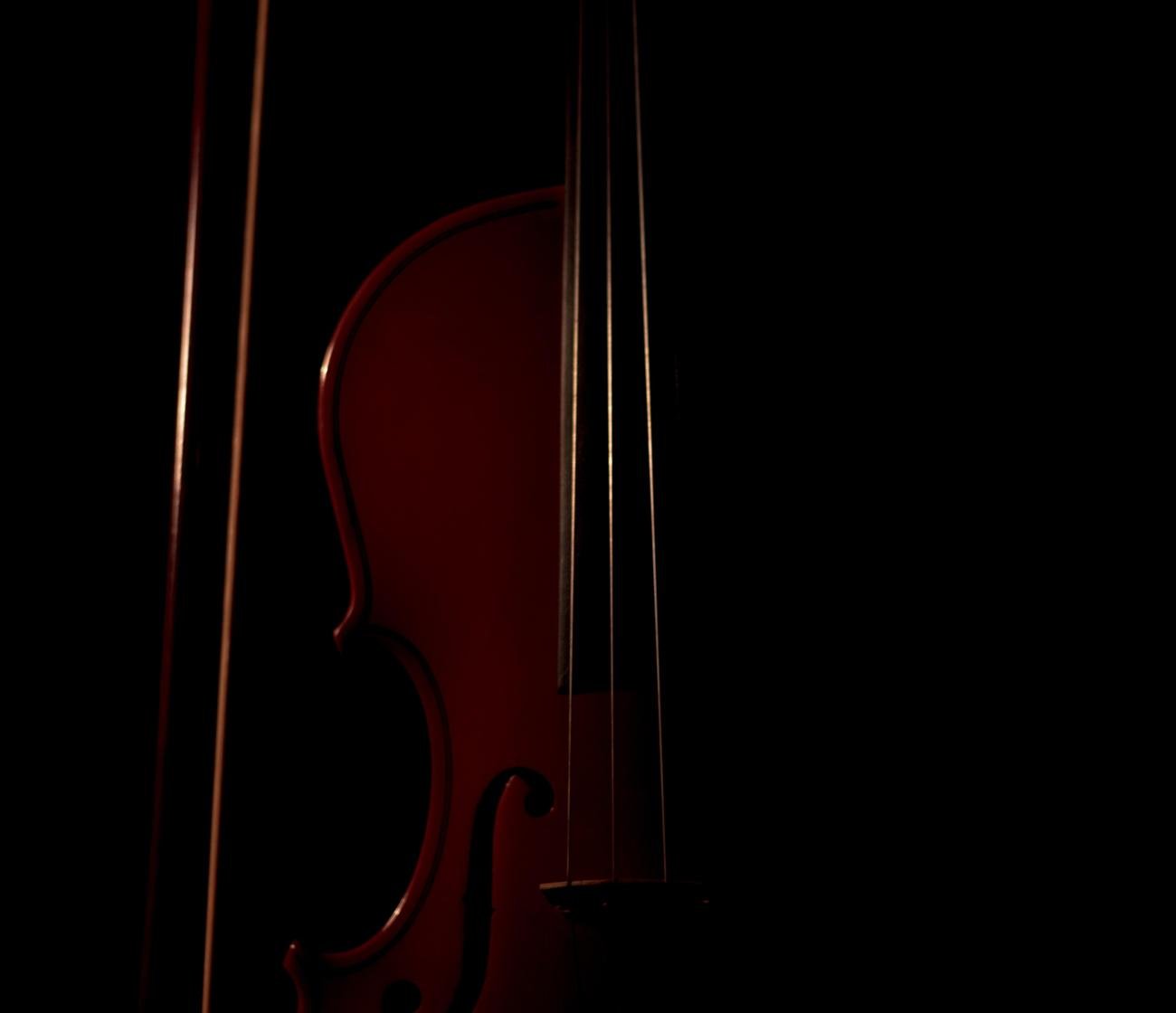Unraveling the Mystery: How Many Strings Does a Violin Have?

As a seasoned violinist and music educator with over a decade of experience, I have developed a deep understanding of the intricacies of stringed instruments. Having performed in renowned orchestras and taught students of various skill levels, my expertise lies in unraveling the mysteries surrounding violins. With a keen eye for detail and a passion for sharing knowledge, I strive to demystify the basic yet crucial question of how many strings a violin has. Through this article, I aim to provide a concise and informative explanation, catering to both beginners and seasoned musicians alike.
How Many Strings Does a Violin Have?
When it comes to stringed instruments, the violin is a classic choice that has captivated musicians for centuries. Whether you’re a beginner curious about the instrument or a seasoned musician looking to deepen your understanding, one of the most fundamental questions is: how many strings does a violin have?
The traditional violin is built with four strings: G, D, A, and E. These strings are tuned in fifths, creating a beautiful and harmonious range of notes. The G string is the lowest in pitch, followed by the D string, the A string, and finally the E string, which is the highest. This arrangement of strings allows for the violin to produce a wide array of tones and melodies.
But did you know that there are variations of the violin with different numbers of strings? For those looking to explore additional range and versatility, 5-string violins can be a fascinating choice. These violins have an extra string, usually tuned to C, which adds a deeper, resonant tone to the instrument. It opens up new possibilities for musicians to play a wider range of music and explore different styles.
It’s important to note that the concept of extra strings is not limited to violins alone. Other stringed instruments like the viola and cello also typically have four strings tuned in fifths. However, just like violins, they can also be outfitted with a fifth string for an expanded range. This extra string is usually tuned to C, similar to the 5-string violin.
Now, you might be wondering how the strings are tuned on a violin. The process is simple yet delicate. The strings can be adjusted by turning the pegs located in the pegbox at the top of the instrument. These pegs allow for coarse adjustments in string tension. However, for finer tuning, fine tuners are often added. These little knobs, usually found on the tailpiece, allow for small adjustments in pitch, making it easier to achieve the desired sound.
So, what is the range of a violin? The highest note a violin can produce is an E. This means that the violin can reach the uppermost limits of the treble clef. It’s truly amazing what a skilled violinist can achieve with just four strings.
When it comes to the physical characteristics of the strings themselves, there are a few key points to consider. The strings of a violin are not all the same. They differ in size, shape, and dimensions, which give each string a unique sound. The materials used also play a role in the tone produced by the strings. Some common materials for violin strings include gut, steel, synthetic core, and various combinations of these. Experimenting with different string types can help musicians find the perfect sound for their playing style and preferences.
To hold the strings in place, a violin has a tailpiece at the bottom of the instrument. This tailpiece connects to the strings, which pass over a bridge. The bridge is a small, wooden piece that supports the strings and transmits their vibrations to the body of the violin. It exerts pressure on the instrument’s top plate, allowing for the creation of sound. The bridge is carefully carved to ensure proper string height and balance, as this greatly affects the playability and sound quality of the violin.
While four-string violins are the most common, there are also exotic or historic violins that deviate from this norm. For example, you may come across three-string or five-string violins. These instruments offer unique playing experiences and tonal possibilities. They are often used in specialized contexts where specific musical effects or requirements call for a different number of strings.
In conclusion, the traditional violin has four strings: G, D, A, and E. However, musicians have the option to explore different variations such as the 5-string violin or the addition of a fifth string on instruments like the viola or cello. The number of strings affects the range and versatility of the instrument, opening up new possibilities for musicians to express themselves. Whether you stick with the classic four-string violin or venture into the world of extra strings, there is no shortage of beauty to be discovered in the realm of these captivating instruments.
Key Takeaways:
– The traditional violin has four strings: G, D, A, and E.
– Extra strings, like those found on 5-string violins, can expand the range and versatility of the instrument.
– Violas and cellos typically have four strings like violins, but can also have an additional fifth string tuned to C.
– Strings can be tuned using pegs in the pegbox or fine tuners on the tailpiece.
– The highest note a violin can produce is an E.
– Strings differ in size, shape, and material, affecting their sound.
– The tailpiece and bridge play important roles in holding and transmitting the vibrations of the strings.
– Exotic or historic violins may have fewer or more than four strings.
There’s something captivating about the violin, isn’t there? Its elegant curves and rich, resonating sound draw music lovers from all walks of life. But did you know that there are 10 interesting facts about this extraordinary instrument? Discover the history, the craftsmanship, and the fascinating stories behind the violin. Are you ready to uncover the secrets? Click here to explore 10 facts about the violin: 10 facts about the violin.
How Many Strings Does a Violin Have?
[youtube v=”vGThjZogf80″]
Introduction
The traditional violin has four strings: G, D, A, and E. These strings are responsible for producing different pitches and tones when played. In addition to the four-string violin, there are also five-string violins that have an extra string, usually tuned to C, which adds a deeper tone. Violas and cellos can also have a fifth string tuned to C. Tuning the strings can be done using pegs in the pegbox or fine tuners on the tailpiece. The highest note a violin can produce is an E.
Understanding Violin Strings
Violin strings differ in various aspects such as size, shape, material, and sound. They play a crucial role in determining the overall tonal quality of the instrument. Each string is named after the note it produces when played open. The strings are as follows:
E String
The E string is the highest-pitched string on the violin. It can be tuned as high as E7 and is responsible for producing bright and brilliant sounds. The E string is the thinnest among all the violin strings, measuring approximately 0.25 millimeters in thickness. To play the E string, the index finger is used.
“The E string produces high-pitched sounds, giving the violin its brilliance.”
A String
The A string is the second highest-pitched string on the violin and is next to the E string. It is typically tuned to A4 and produces a warm and vibrant sound. Compared to the E string, the A string is slightly thicker, measuring around 0.15 millimeters in thickness. When playing the A string, the middle finger is used.
“The A string adds warmth and vibrancy to the violin’s sound.”
D String
The D string is located between the A and E strings. It is tuned to D4 and produces a rich and resonant sound. With a thickness of approximately 0.75 millimeters, the D string is thicker than both the E and A strings. Its pitch can be adjusted using the ring finger.
“The D string contributes to the violin’s richness and resonance.”
G String
The G string is the lowest-pitched string on the violin. It is tuned to G3 and produces a deep and powerful sound. Surprisingly, the G string is the thickest among all the violin strings. Due to its thickness, it vibrates slowly, resulting in a low-frequency sound. The G string is pressed using the pinky finger.
“The G string adds depth and power to the violin’s sound.”
Additional Considerations
In addition to the standard four-string violin, there are variations with fewer or more strings. Exotic or historic violins may have fewer or more than four strings, while some modern violins may feature additional strings for extended range or special effects.
When playing the violin, the tailpiece and bridge play important roles in holding and transmitting the vibrations of the strings, contributing to the overall sound quality of the instrument.
“The tailpiece and bridge greatly influence the violin’s sound production and quality.”
Conclusion
The number of strings on a violin is four: G, D, A, and E. These strings produce a range of pitches, allowing the violin to create a variety of tones and melodies. By understanding the characteristics of each string and their proper techniques for playing, violinists can achieve the desired sound and expression. Whether it’s the brilliant high notes of the E string or the deep and powerful sound of the G string, each string contributes to the unique sound of the violin.

FAQ
Question 1: How many strings does a traditional violin have?
Answer 1: A traditional violin typically has four strings, which are tuned to G-D-A-E.
Question 2: Are there violins with more than four strings?
Answer 2: Yes, there are violins with more than four strings. Five-string violins exist and are a fun way to explore additional range in music.
Question 3: Do other stringed instruments, such as the viola and cello, have the same number of strings as a violin?
Answer 3: Yes, most stringed instruments like the viola and cello also have four strings, which are tuned in fifths (G-D-A-E).
Question 4: Can a violin have a fifth string that is tuned differently?
Answer 4: Some violins have a fifth string, known as a C string, which is tuned differently from the traditional G-D-A-E strings. This additional string expands the range of the instrument.
Question 5: How do you tune the strings of a violin?
Answer 5: The strings of a violin can be tuned by adjusting the pegs in the pegbox or by using fine tuners. Fine tuners allow for small pitch adjustments more easily than the pegs.
- Unraveling Einstein’s Legacy: Who Inherited His Genius? - July 14, 2025
- Unlock Einstein’s Family Tree: Bernhard Caesar & Untold Stories - July 14, 2025
- Unveiling Bernhard Caesar Einstein: His Life & Albert Einstein’s Legacy - July 14, 2025
















